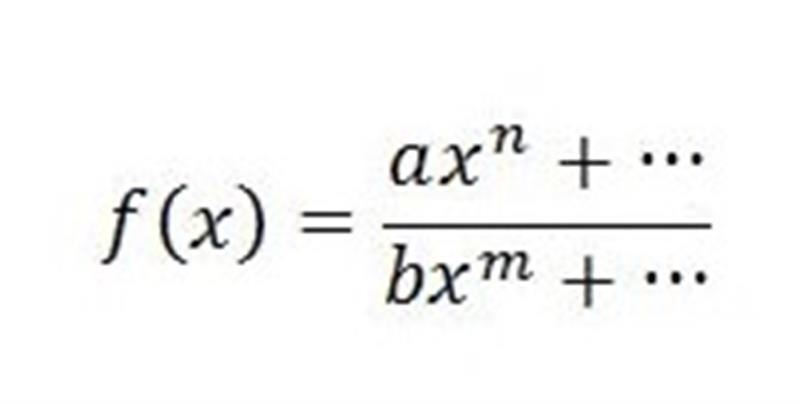Definitions
Before getting into the definition of a horizontal asymptote, let's first go over what a function is. A functionis an equation that tells you how two things relate. Usually, functions tell you how y is related to x. Functions are often graphed to provide a visual.
A horizontal asymptote is a horizontal line that tells you how the function will behave at the very edges of a graph. A horizontal asymptote is not sacred ground, however. The function can touch and even cross over the asymptote.
Horizontal asymptotes exist for functions where both the numerator and denominator are polynomials. These functions are called rational expressions. Let's look at one to see what a horizontal asymptote looks like.
So, our function is a fraction of two polynomials. Our horizontal asymptote is y = 0. Look at how the function's graph gets closer and closer to that line as it approaches the ends of the graph. We can plot some points to see how the function behaves at the very far ends.
Do you see how the function gets closer and closer to the line y = 0 at the very far edges? This is how a function behaves around its horizontal asymptote if it has one. Not all rational expressions have horizontal asymptotes. Let's talk about the rules of horizontal asymptotes now to see in what cases a horizontal asymptote will exist and how it will behave.
Horizontal Asymptotes Rules
There are three rules that horizontal asymptotes follow depending on the degree of the polynomials involved in the rational expression. Before we begin, let's define our function like this:
kkk

Our function has a polynomial of degree n on top and a polynomial of degree m on the bottom. Our horizontal asymptote rules are based on these degrees.
- When n is less than m, the horizontal asymptote is y= 0 or the x-axis.
- When n is equal to m, then the horizontal asymptote is equal to y = a/b.
- When n is greater than m, there is no horizontal asymptote.
The degrees of the polynomials in the function determine whether there is a horizontal asymptote and where it will be. Let's see how we can use these rules to figure out horizontal asymptotes.